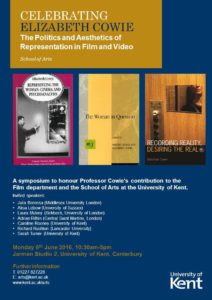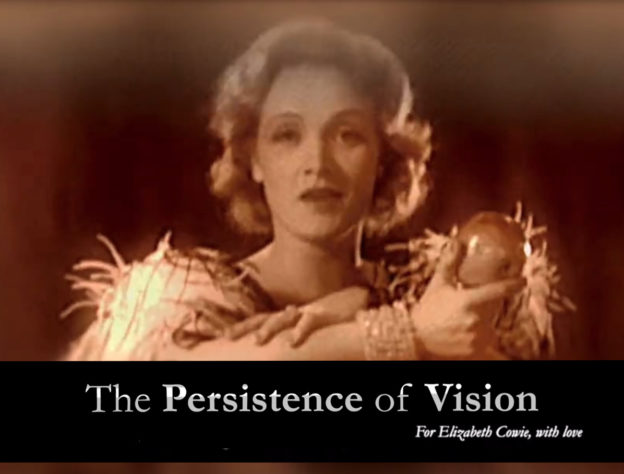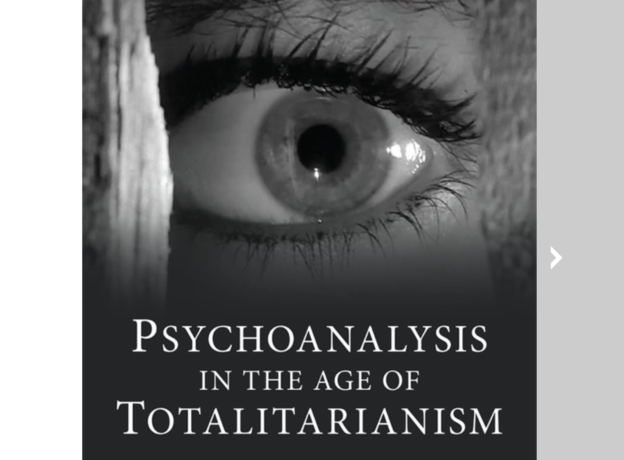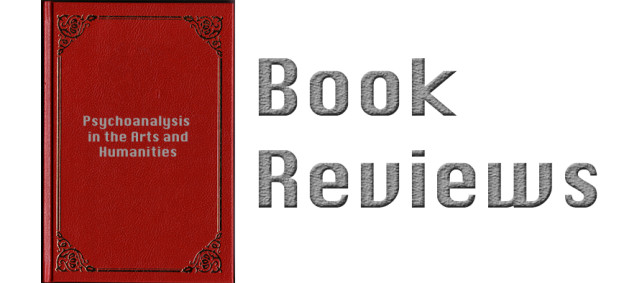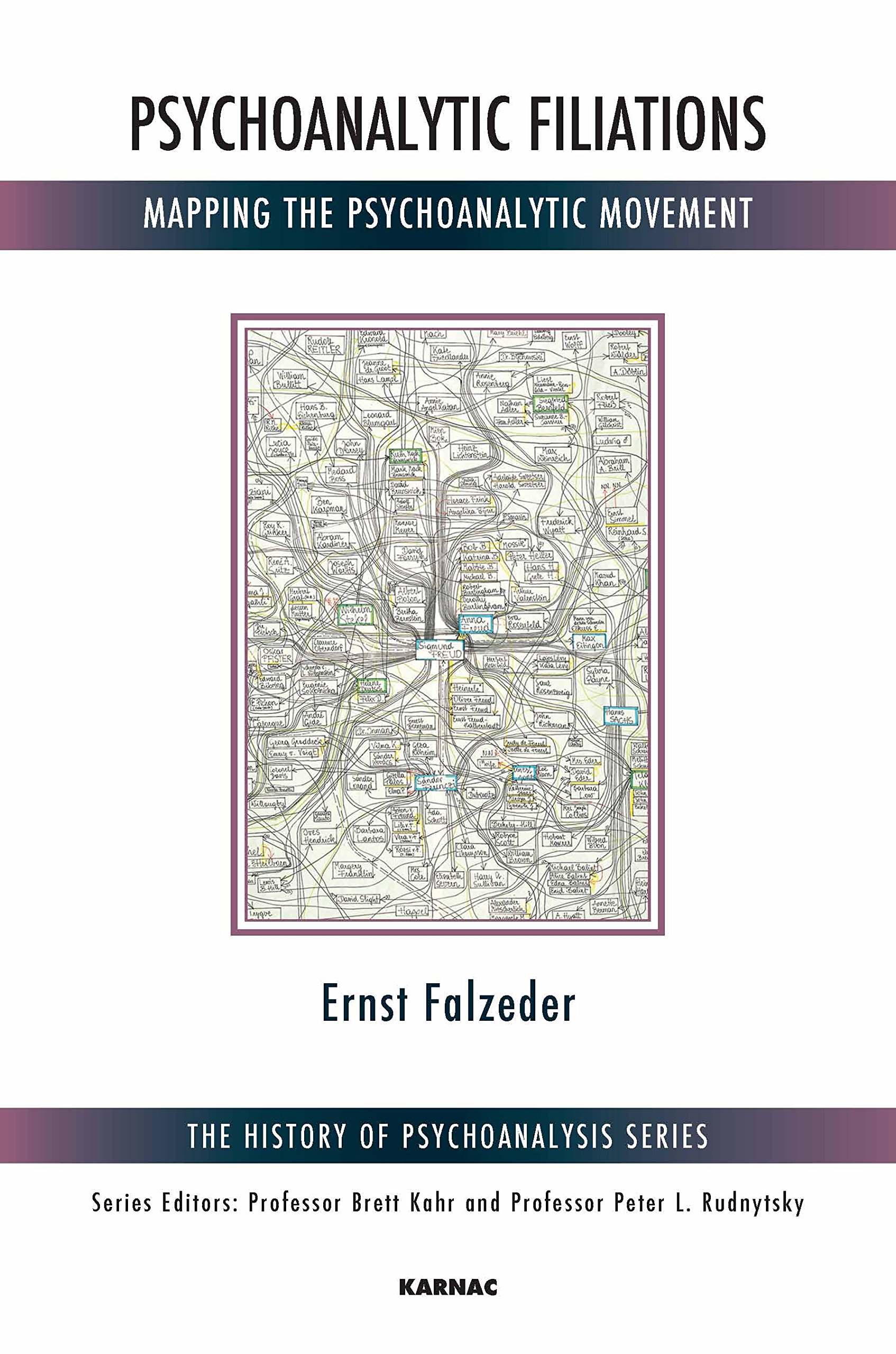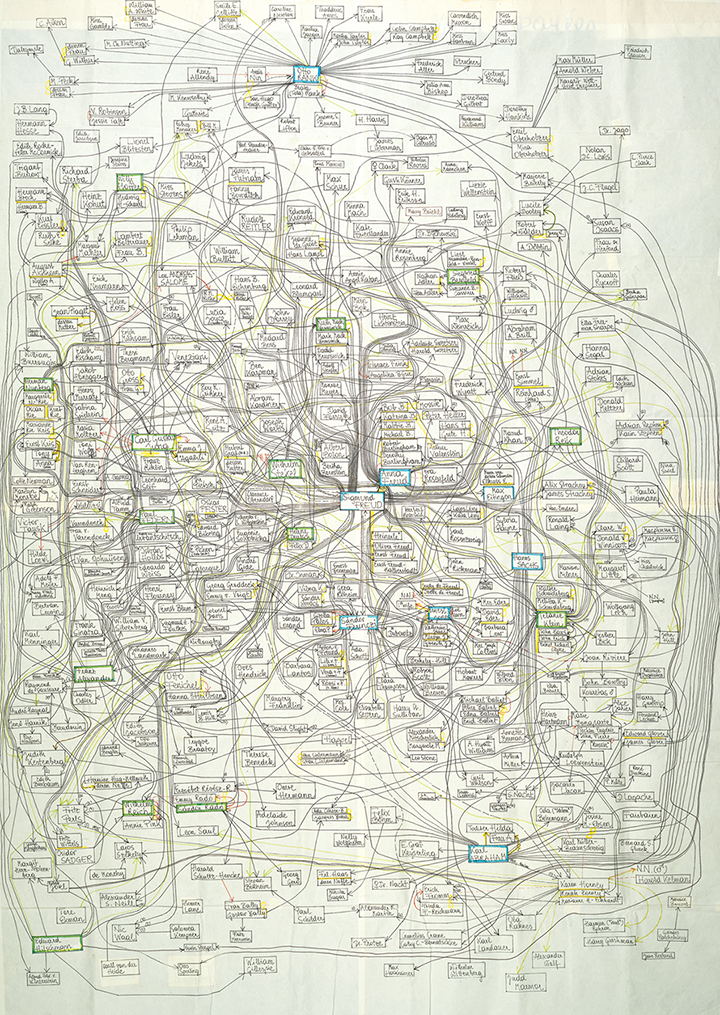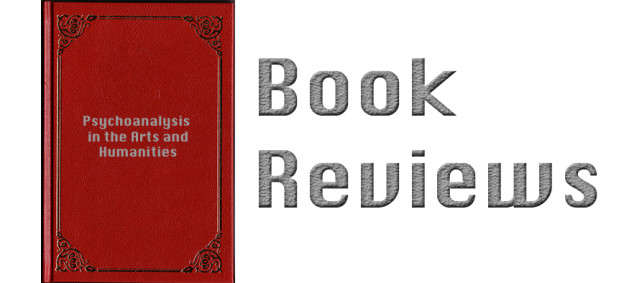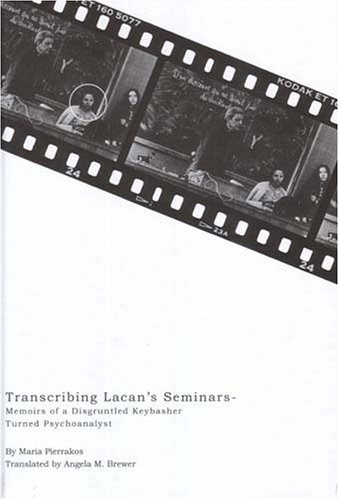
Transcribing Lacan’s Seminars – Memoirs of a Disgruntled Keybasher Turned Psychoanalyst by Marie Pierrakos (London: Free Association Books, 2006).
Reviewed by Will Greenshields
In 1971-1972 Lacan gave a series of lectures at the Sainte-Anne psychiatric hospital where he had begun his teaching in 1953 before being ‘excommunicated’ by the International Psychoanalytic Association in 1964. His intention was to deliver a more digestible complement to the abstruse séminaire that was to continue at the Panthéon (Seminar XIX: …oupire).[1] Hoping for a different audience to the throng of philosophers and logicians that attended his seminars, Lacan began his first lecture by asking those who were interns at the hospital to raise their hands. He was to be disappointed: an unexpectedly large showing by the usual crowd had left the psychiatrists and psychoanalysts in the minority. Undeterred, Lacan managed to maintain a certain lightness of tone and topic for the first few lectures before the quasi-mathematical scribblings that had become a feature of the seminars began to dominate proceedings. Lacan’s final lecture concluded with the presentation of a nightmarish Greimasian square and a comic dialogue between the deaf and the belligerent:
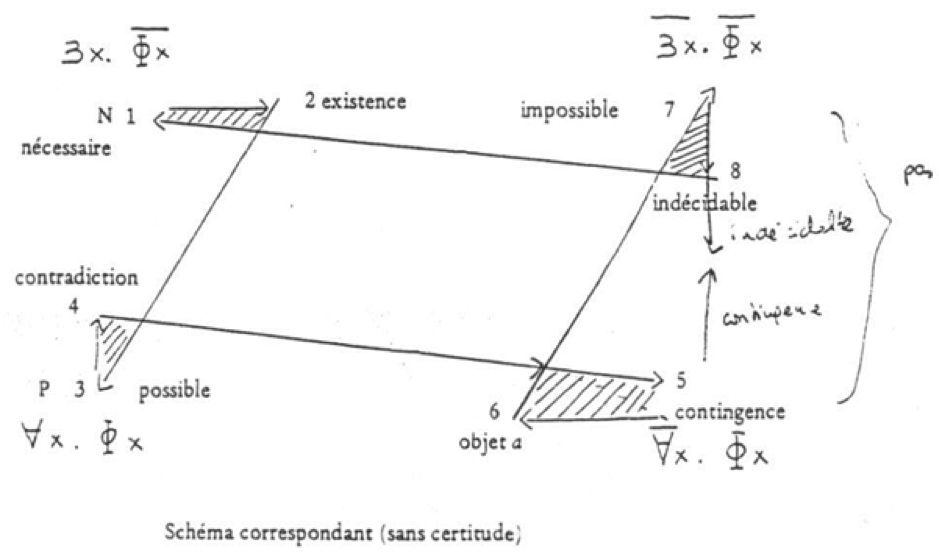
Lacan – Voilà! I think I’ve done enough for this evening, I do not want to finish on a sensational peroration, but the question that, yes, it is well enough written. Necessary, impossible…
X – We can’t hear anything!
Lacan – Huh? Necessary, impossible, possible and contingent.
X – We can’t hear anything.
Lacan – I don’t give a damn! Voilà! This is a way of opening things up.[2]
Transcribing this example of Lacan’s peculiar brand of unaccommodating pedagogy would have been Maria Pierrakos, and it was surely scenes such as this that contributed to the disillusionment and ‘wrath’[3] to which she so artfully testifies in Memoirs of a Disgruntled Keybasher. As far as Pierrakos is concerned, this style of presentation – wherein an obscure compound of letters and jargon is succeeded by a perfunctory ‘voilà!’, as if to suggest that what’s at stake is supremely obvious – is most assuredly not ‘a way of opening things up.’ It is a contention that Pierrakos shares with the numerous critics of Lacan’s ‘dire mastery’[4] who have preceded her: there is a familiar periodization of Lacan’s output – a plaintive reference to the ‘Glory Days’ of theoretical ingenuity and intellectual excitement that followed in the wake of early écrits is succeeded by the observation that, during the 1970s, ‘things start[ed] to go off the rails’ (MK: 15). Beyond veiled references to ‘the Son-in-Law’ (i.e. Jacques-Alain Miller) and ‘power struggles’ (MK: 8-9), Pierrakos says little about the institutional turbulence that Élisabeth Roudinesco has so exhaustively documented:[5] her subject is instead a particular attitude, an irresponsible and uncaring intellectualism, ‘a certain dryness, disdain, absolutism, a sense of the derisory’ that Lacan stands accused of exemplifying and cultivating (MK: 43). For Pierrakos, ‘I don’t give a damn!’ is every bit as Lacanian a statement as ‘il n’y a pas de rapport sexuel’; indeed, it is her thesis that the former is the ultimate consequence of a discourse that promotes the latter.
Pierrakos is perhaps at her most incisive when discussing the pathetic mock-epics that accompanied Lacan’s later performances like so many symptoms of a greater malaise:
On the podium sat the chosen few. So much drama enacted on that stage! For example the comic-ballet The Coat Resplendent: who would have the privilege of helping the Master into his coat this week? Or the tragedy of The Lover Spurned: I once saw a much-loved disciple literally glowing with His light come to sit at the right hand of the Father. Soon, however, the sun’s rays shone elsewhere, and before my very eyes he withered away; destructured, destroyed within a few weeks; meanwhile another satellite ascended into the firmament. (MK: 9)
Where the author is less convincing is in her interrogation of the malaise itself. This is chiefly due to the book’s brevity: sixty-six pages is simply not sufficient space for a persuasive criticism of a highly complex enterprise that, as Jonathan Scott Lee puts it, by blending ‘formal mathematical proof (or at least construction), psychoanalytic theory, and even poetry’, offered ‘something unique in the history not only of psychoanalytic theory but of theoretical writing in general.’[6] For Pierrakos, the poetry (i.e. the neologistic puns with which Lacan peppered his speech) was narcissistic drivel that, far from being a harmless indulgence, was employed with the aim of achieving domination over the ‘dumbfounded’ and ‘naive disciple’ whilst the mathematical constructions are the products of a ‘megalomania’ that served only to reduce psychoanalytic theory to a series of abstract axioms (MK: 26-27). However, rather than offering a detailed critique of this discourse, assessing the function of the puns in each text, Pierrakos rips these constructions from their context and lists them: ‘Punning, spoonerisms, play on words, quips, punctuate the discourse of Lacan. Take the famous “poubellication”… [or] siberianetics for the cold logic of cybernetics; Lacan also enjoys talking about looterature [lituraterre]’ (MK: 24). Presented in this way, the puns naturally appear undermotivated and silly.
The problem is that Pierrakos sets herself very narrow confines: despite arriving at conclusions about theory and practice, both of these domains are – as far as discussion is concerned – off limits:
Lacan’s theories as such will not concern me here. (MK: 10).
I do not intend to discuss Lacan the psychoanalyst: I was neither in analysis nor in control analysis with him, nor did I personally know any of his patients. (MK: 12)
Pierrakos’ subject matter – a certain psychoanalytic zeitgeist or attitude propagated by Lacan and his pupils – becomes slightly ephemeral and difficult to grasp or pin down when the theory and practice (with which this attitude is associated) has been evacuated. The ‘careful but excoriating criticism of the Lacanian system’ promised by the book’s blurb is replaced by literary analogies[7] and a compendium of individual and collective tics (such as the audience’s ‘orgasmic murmurs greeting the witticisms of the great man’ [MK: 17]). Pierrakos provides only a summary dismissal and a conclusion that, because it is supported by such a threadbare argument, boarders on the platitudinous: ‘What is at stake is the ethics of our profession, the respect of our fellow human beings. The arrogance of certitude is tantamount to violence towards our analysands’ (MK: 66).
It’s worth briefly assessing the two styles that Pierrakos criticises – the Joycean poetics and the idiosyncratic mathematics – in order to see if it really is a disciple’s certitude that they encourage and inspire. Returning to the 1971-1972 lectures at Sainte-Anne, it is noteworthy that, within the space of a month, Lacan introduced the two names of these styles: lalangue and matheme. The former refers to the non-sense that is produced when the materiality of the letter disrupts and complicates signification. Lacan was constantly exploiting homophonic equivocations in order to show how the communication of intentional meaning falters, arguing that, rather than existing in the certitude of a hidden truth or final meaning, the unconscious instead presents itself to be read in these uncertain and unpredictable slips.‘[R]eading in no way obliges you to understand. You have to read first.’[8] One can only understand what one already knows: the task of the analyst does not lie in the application of knowledge; he must instead learn how to read something that he cannot understand or, to put it another way, to read without understanding, without imposing a synthetic coherence that would erase the unconscious. This is precisely what Lacan, especially in his later seminars, imposes upon us: the experience of reading first, of reading in the absence of understanding. Therefore, what Lacan presents in these seminars is not so much a consolidated body of knowledge as it is a method or attitude, an ethical stance that analyst must adopt with respect to radical uncertainty: ‘A knowledge that is able for nothing, the knowledge of impotence… this is what the psychoanalyst may convey.’[9] If ‘it happens that people express themselves in this way that they do not… have the feeling of understanding’ then so much the better: it is only when one is confronted with something that one does not already know that ‘this word’ becomes a genuine ‘teaching word.’[10]
In her 1999 preface to Gender Trouble, Judith Butler proffered an interesting defence of her own infamously difficult style. Observing that Nixon prefaced a lie by stating ‘let me make one thing perfectly clear’, Butler notes that the ‘demand for lucidity forgets the ruses that motivate the ostensibly “clear” view’ and asks a series of pertinent questions: ‘what would be the price of failing to deploy a certain critical suspicion when the arrival of lucidity is announced? Who devises the protocols of “clarity” and whose interests do they serve? What is foreclosed by the insistence on parochial standards of transparency as requisite for all communication? What does “transparency” keep obscure?’[11] We might compare these to the questions Pierakkos raises: Lacanians are, apparently, ‘bewitzched by the Witz. And what does this pleasure consist of? What are these tongue-twisters replacing? What is concealed by this desire to dazzle, to captivate, to hypnotise?’ (MK: 25) For Lacan, the ‘demand for lucidity’ would obscure the unconscious. It is the desire of the ego psychologist, who, as an ideal model of psychical health, ‘devises the protocols of “clarity”’ in the absence of any ‘critical suspicion’ or self-doubt. Whilst the ego psychologist understands you and promises to bring one to the point of understanding and self-mastery, the analyst proceeds on the basis that ‘the subject of the unconscious… can learn how to read.’[12] Lacan’s style is not the result of a malign intent to dominate dumbstruck epigones or inspire in them the ‘arrogance of certitude’, on the contrary, it aggressively erodes the reader’s belief in the very possibility of attaining to a position of intellectual dominance or certitude.
Certainly, the task of reading Lacan is a difficult one; the reader ‘must pay the price with elbow grease.’[13] Much of Pierrakos’ irritation with Lacan’s style appears to stem from the frustration of her efforts, as a transcriber, to:
vicariously absorb this super-concentrated course of psychoanalytical theory through osmosis. “I can’t believe it”, I thought, “something will happen, I’m bound to learn something from these formulae and discourses, from the Borromean knots, the mathemes, because I not only heard them spoken by Lacan but listened to these words of the Seminars once again on the tape recorder… Yet this teaching remained a dead letter for me. (MK: 33-34)
Lacan was determined that his work should not be vulnerable to over-hasty comprehension and lazy reduction, that his ‘return to Freud’ should not sink beneath a tide of received ideas and banal anecdotage (“Oh yeah – Freud. Isn’t he the guy that says all guys secretly want to have sex with their mother and that girls have penis envy…”). Reading Lacan takes considerable mental effort, ten years of it according to the man himself.[14] Maurice Merleau-Ponty and Claude Lévi-Strauss both agreed that whilst there might be something interesting and worthwhile about Lacan’s work, neither had the time to find out.[15] This is a perfectly legitimate position to adopt: just think of all the wonderful texts one could be discovering in the time spent poring over Lacan! However, polemical criticism, particularly that of the flippant variety indulged in by Chomsky,[16] lacks credibility when it is not supported by a thorough knowledge of Lacan’s works acquired through ‘elbow grease.’
One cannot hope to passively soak up Lacan’s ‘sibylline utterances’ (MK: 26) in the way that the characters of Aldous Huxley’s Brave New World receive their hyponopaedic messages. These aphorisms – there is no sexual relation, the woman does not exist, etc. – are, according to Pierrakos, evidence of Lacan’s ‘arrogan[t]’ attempts to bully and dominate, to assume ‘the place of the god’, to be ‘at once Oracle and High Priest who both states and resolves the enigma’ (MK: 26). The aphorisms confront the reader with absolute obscurity whilst also appearing to promise absolute knowledge, the ultimate satisfaction of epistemological desire. However, I’m not convinced that Lacan had either of these outcomes in mind. Indeed, with respect to the second potential outcome, Lacan demands that we refuse what he is offering because it is not ‘that.’[17] In his 2011 documentary, Rendez-vous chez Lacan, Gérard Miller asked one of the most skilful interpreters of Lacan’s work, Jean-Claude Milner, whether, ‘in his teaching’, Lacan was ‘clear or obscure’. In reply, Milner stated that:
Generally, writers are said to be clear when they are clear locally. Take one sentence, and it’s clear. With Lacan, clarity operates in a network. From the reader’s point of view, clarity is a journey. One must travel the network, and since there are several networks, different journeys produce different insights.[18]
The aphorisms are not immediately clear; indeed, on first appearance they often strike one as being utter gibberish. They must instead be read as elements of a dense palimpsest – elements that are often repeated but with minimal variations or in different contexts. Reading the Lacanian rebus schools one in the psychoanalytic method: ‘The function of the structure of the network, the way in which the lines – of association, precisely – come to overlap one another, to cross-check with one another, to converge at elective points from which they depart again electively, this is what is indicated by Freud.’[19] What appears to be at stake here is less a transmission of knowledge and more a familiarisation with a methodology – or, to put it another way, an intertwining of theory and practice which means that access to the former necessarily requires an adoption of the latter (thus challenging the usual development that sees practice follow the comprehension of theory).
Pierrakos appears to want to have her cake and eat it: on the one hand, Lacan is declared to be utterly incomprehensible – ‘abstruse… convoluted… dizzying…. labyrinthine’ (MK 19-20) – and on the other, the Lacanian phenomenon can be definitively summed up in a few words: ‘Why couldn’t I simply imbibe, like all those around me, the theoretical constructs explained throughout the Seminars? Today I believe it is because the processes of seduction and control were the first thing I noticed’ (MK: 17-18). The work and discourse are not worth analysing in and of themselves – they are simply the tools of mastery. The main purpose of Lacan’s ‘increasingly perfected system of telling, of irrefutable paradoxes, of paralysingly paradoxical imperatives and of clever demonstrations’ was to ‘spellbind his audience’ (MK: 19). Seduction and control are not an unwitting side-effect; they are instead the end with respect to which the entirety of Lacan’s seminar is the means. Never mind the humdrum business of reading and interpreting the discourse itself, Pierrakos has ascended to a higher plane of understanding; she has seen the wood for the trees, the over-arching power struggle with respect to which the theory is a mere sideshow, the means to a malevolent end. Pierrakos, as what Lacan would refer to as a ‘non-dupe’, knows what all of this is really about.
I am reminded here of David Shrigley’s Those who get it – Pierrakos appears to occupy the point of intersection between ‘those who do not get it’ and ‘those who realise there is nothing to get’:

This is, of course, an untenable position – the two statements (‘there exists something I am not getting’ and ‘the something that I am not getting does not exist’) can only co-exist in a sort of kettle logic – but it is one that frustrated critics often adopt with respect to Lacan’s work.[20]
A book review is not the place to attempt a convincing defence of Lacan’s deployment of topology and ‘mathemes’ (a neologism comprising Lévi-Strauss’ ‘mytheme’ and the Greek ‘mathêma [μάθημα]’, meaning ‘lesson’). Outside of the variable length session, this is perhaps the most controversial aspect of Lacan’s teaching and, because he produced so many conflicting statements and experienced as many failures as he did successes, it is also one of the most complex. I will, therefore, restrict myself to two (by no means exhaustive) statements on the matter – made specifically in reference to Pierrakos’ argument that the mathemes necessarily result in ‘the arrogance of certitude’. Firstly, they do not amount to a metalanguage: quite the contrary, they instead perfectly demonstrate the impossibility of metalanguage. In order to make the mathemes comprehensible Lacan must re-present them, he must employ a language riddled with precisely the same ambiguities that the unequivocal mathemes were supposed to eradicate: ‘Mathematical formalization consists of what is written, but it only subsists if I employ, in presenting it, the language I make use of. Therein lies the objection: no formalization of language is transmissible without the use of language itself.’[21]
Secondly, Lacan was not attempting to resolve the enigmas of subjectivity through formalization, to ‘go to the end of infinity and back, and return unscathed, having wrapped it all up in a few… algebraic formulae’ (MK: 27). He was instead interested in the point at which logical systems falter on an internal contradiction or inconsistency (he frequently referred to Gödel’s incompleteness theorem), the point at which they fail to ‘wrap it all up’, observing that ‘[t]he real can only be inscribed on the basis of an impasse of formalization.’[22] There can be no perfectly self-reflexive, autonomous and totalised organisation of knowledge. Most of his mathemes ($, a, Φ, etc.) denote an irresolvable structural paradox that topological figures were called upon to materialise and demonstrate.
When Pierrakos does, briefly, turn her attention to the theory itself (as opposed to the style in which the theory was presented), she repeats well-worn critiques. Quoting Didier Anzieu’s assertion that ‘Lacanian ideas “don’t stand up well to the test of practice”’, Pierrakos argues that:
On the continuum of mental life ranging from the most fusional bodily sensations to the most sophisticated forms of sublimation, Lacan traced the limits above and below which the analytical field should not be envisaged. He expresses this view with his customary sarcasm. Below these limits, in his own words: ‘No doubt that, on this path, sniffing one another becomes the nec plus ultra of the transference reaction’. And beyond these limits, it is a matter of ‘excluding the tender feelings of the fine soul’. So, on the one hand, the pre-verbal is excluded – that is, the most animal, archaic aspects of the body – and on the other, the affective, the aesthetic and the idealising aspects of the imaginary. This leaves only an extremely narrow, desiccated field! What kind of strange flowers can possibly grow there?
… Let us try to imagine (yes, imagine!) the man described by Lacan: the negative, X-ray image of a man: no living matter is visible: here we have a disembodied, devitalised man, a puppet whose strings are pulled by the signifier, a parlêtre/ speakbeing. Is such a being, a parlêtre, anything other than speech? (MK: 52-53)
The notion that, to cite André Green’s erroneous appraisal, ‘affect has no place in’ Lacan’s work,[23] had, even in Lacan’s own lifetime, become such a prevalent canard that he felt it necessary to directly address it in his 1973 television interview: ‘Affect… befalls a body whose essence it is said to dwell in language… [without] finding dwelling-room, at least not to its taste.’[24] Far from eradicating affect, language causes it.[25] Strictly speaking, Pierrakos is correct in observing that Lacan did not discuss the ‘pre-verbal’[26] – however, it does not necessarily follow that the ‘parlêtre’ is ‘disembodied’. Whilst, for Lacan, there is no such thing as a subject prior to the introduction of language, it remains the case that he devoted much of his work to a conceptualisation of the extra-discursive or the post-verbal, the corporeal jouissance that is the consequence of language. For an example of this, see my second entry in the ‘Speaking Lacanese’ series. The subject that approaches the clinic is always post-verbal – that is, affected by language.
Where Pierrakos does hit upon something very pertinent is in her suggestion that the schizophrenic split between Lacan-the-teacher and Lacan-the-analyst, between the ‘cynical, cold face’ shown in public and the ‘warmth and emotion’ to which Lacan’s former analysands testify in Gérard Miller’s film, between the man who didn’t give a damn and the man who did, could not fail to trouble (or, in her words, trap in an ‘eternally unresolved transference’) those who were being both taught and analysed by the master (MK: 28-29).[27] Whilst the problems caused by the irreconcilability between the teacher and the analyst are probably at their most pronounced and affective when the teacher and the analyst are the same person, problems still arise even when they are not. When, in Seminar XVII, Lacan presented what he called the four discourses (which meant concretely distinguishing between the discourse of the university and the discourse of the analyst), he formally announced his interest in an antagonism that he would never satisfactorily resolve. In a short report detailing his observations on the progress of the Department of Psychoanalysis at Vincennes, Lacan wrote that ‘[t]here are four discourses. Each one thinks it is the truth. The only exception is the analytic discourse… [T]his discourse excludes domination; in other words it teaches nothing. There is nothing universal about it, which is precisely why it cannot be taught. How does one go about teaching what cannot be taught?’[28] It is my intention to return to this statement in the next entry in the ‘Speaking Lacanese’ series – which will necessarily entail returning to Pierrakos’ argument that the ultimate effect of Lacan’s work was, despite his protestations to the contrary, domination.
Memoirs of a Disgruntled Keybasher is, for the most part, a critical response to Lacan’s attempts to propagate the analyst’s discourse from within the university, to hit upon a workable compromise between the universality of a transmissible and comprehensible knowledge and the incomprehensible singularity of the patient. In this respect, it raises, with great eloquence and conviction, questions that concern nothing less that the future of (institutional) psychoanalysis and the status of psychoanalytic knowledge. It is a shame, then, that these questions are granted so little space.
[1] Specifically, he talks of presenting things at an ‘elementary level’. Jacques Lacan, The Knowledge of the Psychoanalyst, 1971-1972, unofficial trans. by Cormac Gallagher (London: Karnac, n.d.), session 2, p. 2.
[2] Lacan, The Knowledge of the Psychoanalyst, session 7, p. 27.
[3] Marie Pierrakos, Transcribing Lacan’s Seminars – Memoirs of a Disgruntled Keybasher Turned Psychoanalyst, trans. by Angela M. Brewer (London: Free Association Books, 2006), p. 8. Hereafter referred to as MK.
[4] This is a reference to François Roustang’s Dire Mastery: Discipleship from Freud to Lacan, trans. by Ned Lukacher (Baltimore: The Johns Hopkins University Press, 1982).
[5] See Élisabeth Roudinesco, Jacques Lacan & Co. A History of Psychoanalysis in France, 1925-1985, trans. by Jeffrey Mehlman (Chicago: The University of Chicago Press, 1990).
[6] Jonathan Scott Lee, Jacques Lacan (Amherst: The University of Massachusetts Press, 1991), p. 197.
[7] These include The Emperor’s New Clothes, Alice Through the Looking Glass and Bridge over the River Kwai (MK: 16).
[8] Jacques Lacan, Seminar Book XX : Encore, 1972-1973, trans. by Bruce Fink (New York: Norton, 1998), p. 65.
[9] Lacan, The Knowledge of the Psychoanalyst, session 1, p. 12
[10] Ibid., session 2, p. 2.
[11] Judith Butler, Gender Trouble (New York: Routledge, 2007), p. xx.
[12] Lacan, Seminar XX, p. 37.
[13] Jacques Lacan, Écrits, trans. by Bruce Fink (New York: Norton, 2006), p. 5.
[14] Jacques Lacan, Television/ A Challenge to the Psychoanalytic Establishment, trans. by Denis Hollier, Rosalind Krauss, Jeffrey Mehlman and Annette Michelson (New York: Norton, 1990), p. 45.
[15] See Élisabeth Roudinesco, Jacques Lacan: An Outline of a Life and a History of a System of Thought, trans. by Barbara Bray (Cambridge: Polity Press, 1997), p. 209.
[16] See: http://www.critical-theory.com/noam-chomsky-calls-jacques-lacan-a-charlatan/
[17] I am depending upon the Kantian revelation here – i.e. that the epistemological lack is necessarily an ontological lack.
[18] Rendez-vous chez Lacan, directed by Gérard Miller (Editions Montparnasse, 2011), DVD.
[19] Jacques Lacan, Seminar Book XIV: The Logic of Phantasy, 1966-1967, unofficial trans. by Cormac Gallagher (London: Karnac, n.d.), session 4, p. 4.
[20] We would have to introduce an additional circle to account for Lévi-Strauss and Merleau-Ponty’s position (as those who do not get it but realise that there is something to get).
[21] Lacan, Seminar XX, p. 119.
[22] Ibid., p. 93.
[23] André Green, The Fabric of Affect in the Psychoanalytic Discourse, trans. by Alan Sheridan (London: Routledge, 1999), p. 99.
[24] Lacan, Television, pp. 23-24.
[25] For an extensive and clear account of Lacanian affects see: http://www.lacanonline.com/index/2010/05/what-does-lacan-say-about-affects/
[26] I should add an important nuance here: Lacan does not discuss the pure ‘pre-verbal’. The imaginary is always to be considered in terms of its interaction with the other two categories (i.e. the real and the symbolic).
[27] For a collection of testimonies regarding Lacan-the analyst, see: Hurly Burly No. 3 (London: NLS, 2010).
[28] Jacques Lacan, ‘There are Four Discourses’, trans. by Adrian Price and Russell Grigg in Jacques-Alain Miller and Maire Jaanus (eds), Culture/ Clinic 1: Applied Lacanian Psychoanalysis (Minneapolis: University of Minnesota Press, 2013), p. 3.
